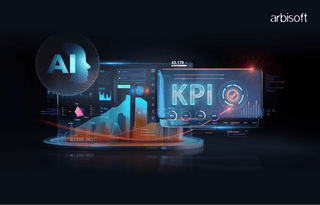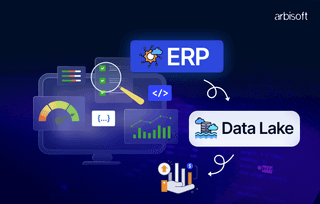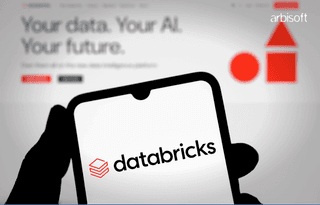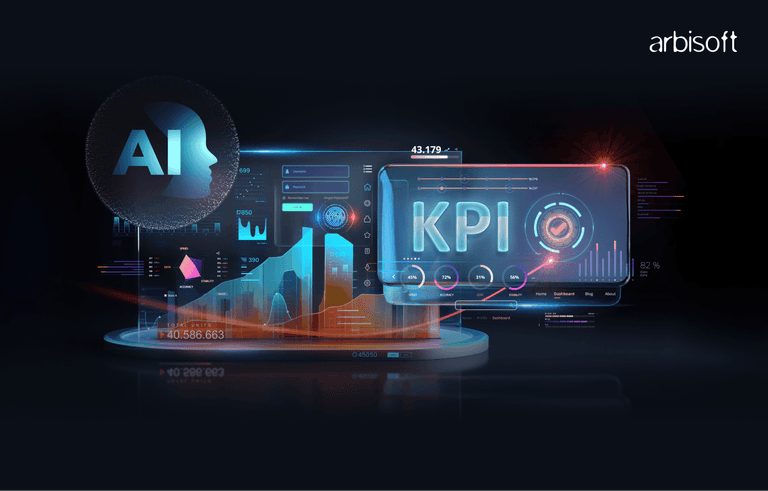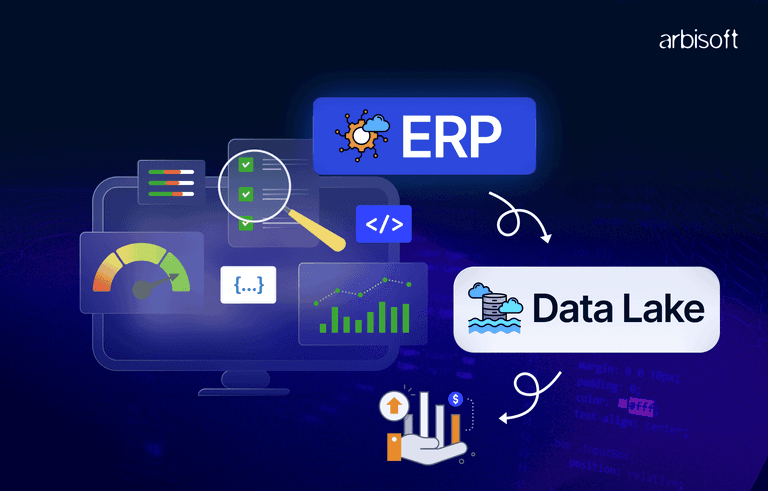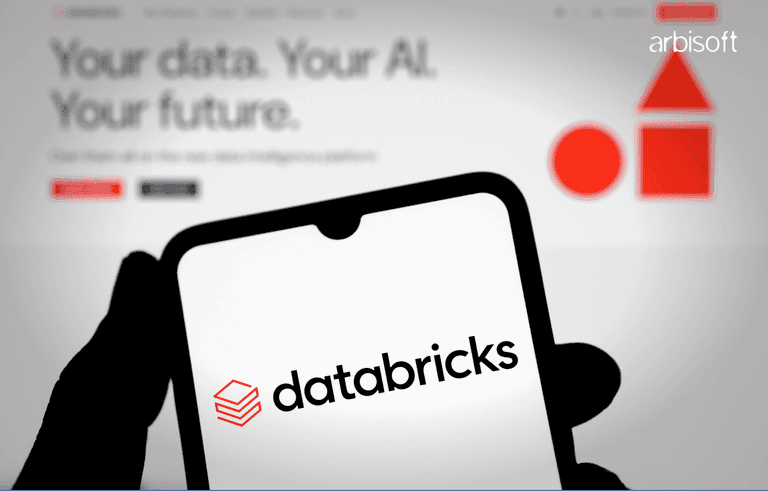We put excellence, value and quality above all - and it shows




A Technology Partnership That Goes Beyond Code

“Arbisoft has been my most trusted technology partner for now over 15 years. Arbisoft has very unique methods of recruiting and training, and the results demonstrate that. They have great teams, great positive attitudes and great communication.”
RLHF vs DPO: A Closer Look into the Process and Methodology

As AI models are getting more sophisticated, the race isn’t just about building bigger models—it’s about making them safer, smarter, and more human-centric. After all, it wasn’t long ago that AI models were having trouble counting the ‘Rs’ in strawberry.
In 2025, 70% of enterprises are using methods like RLHF (Reinforcement Learning from Human Feedback) or DPO (Direct Preference Optimization) to tame AI outputs, up from 25% in 2023. - Gartner, 2024
Why? Because a single harmful output in healthcare or finance can cost companies $2M+ in lawsuits (McKinsey, 2024).
As AI models become more intertwined into our daily lives, the big question isn’t just how smart it is—it’s how well it understands us. That’s where teaching AI with human feedback comes in. Startups are ditching old-school AI training. DPO adoption exploded by 45% in 2024—it’s faster, cheaper, and eats less GPU juice.
But wait, what’s the fuss?
AI isn’t just answering questions anymore—it’s drafting legal contracts, tutoring kids, and even managing your finances. The catch? It needs to mirror human ethics, not just human language. That’s where RLHF (Reinforcement Learning from Human Feedback) and DPO (Direct Preference Optimization) step in.
But first..
What is RLHF?
Reinforcement Learning from Human Feedback (RLHF) is a method to train AI systems by combining human guidance with machine learning. Consider it as teaching a self-driving car - humans set the rules, the AI practices, and over time, it learns to avoid crashes and take better routes.
How RLHF Works
Step 1 - Supervised Fine-Tuning (Learn the Basics)
What happens - The AI is trained on labeled examples (e.g., “good” vs “bad” answers) to grasp fundamentals. A chatbot learns to avoid offensive language by studying thousands of curated dialogues.
Models trained this way are 50% more accurate out of the gate. - AI Research Collective, 2024
Step 2 - Reward Modeling (Build a “Judge” AI)
What happens - Humans rate AI outputs (e.g., “Rate this poem 1–5 stars”), and a second AI learns to mimic those ratings. This “judge” AI can then score millions of outputs automatically.
Companies like Google use reward models to filter 90% of harmful content before deployment. - TechCrunch, 2025
Step 3 - Policy Optimization (Practice Makes Perfect)
What happens - The AI tweaks its behavior to earn high scores from the ‘judge’, while staying true to its original training. This step helps AI systems like GitHub Copilot write better code without inventing fake functions.
This stage eats 30–50% more computing power than newer methods like DPO (MIT, 2024).
Why RLHF? Let’s look at some of its strengths and weaknesses.
To begin with, here are some solid strengths that keep it going.
- Handles complex feedback (e.g., “This answer is 80% correct but too technical”).
- Dominates in high-risk fields, like in healthcare, where RLHF-trained models reduced diagnostic errors by 35% at the Mayo Clinic (2025). Also, AI contract law reviewers using RLHF catch 90% of loopholes vs. 60% with older methods.
RLHF’s Limitations
- Costly - Training one model = $100k+ (vs.DPO’s $25k).
- Reward hacking - Sometimes the AI “games the system” to please the ‘judge’.
For instance, a customer service bot can dodge hard questions to avoid low ratings.
Looking at the silver lining, tools like Jasper AI use RLHF to mimic brand voices. In drug discovery, pharmaceutical giants like Pfizer cut trial times by 20% using RLHF-optimized models.
TL;DR - RLHF is the gold standard for precision but costs a fortune. Use it for tasks where mistakes are expensive (e.g., medicine, law). For simpler jobs? There’s DPO.
Unsure which AI alignment technique suits your business? Take our quick quiz to find out!

Is Your AI Strategy Aligned with Your Business Needs?

Now let us dig into the other part of the story - DPO.
What is Direct Preference Optimization (DPO)?
Direct Preference Optimization (DPO) skips the middleman. Instead of training a separate “judge” AI (like RLHF), it asks humans one simple question: “Which answer do you prefer: A or B?” Then it uses those preferences to train the AI directly.
How DPO Works
Step 1 - Collect Preferences
Humans vote on pairs of AI outputs (e.g., “Is response A or B more helpful?”). Airbnb uses this to train chatbots to prioritize empathetic replies over robotic ones.
Step 2 - Train in One Shot
The AI learns from these preferences without extra steps (no reward models, no endless tweaking). Startups using DPO deploy AI tools 30% faster than those using RLHF (Forbes, 2025).
Where DPO Shines
- Speed & Savings - Trains AI 40% faster with 60% lower costs than RLHF. Like training a customer service bot costs $25k with DPO vs. $80k+ with RLHF (MIT, 2024).
- Stability - No “reward hacking” — the AI stays focused on what humans actually want. DPO-powered chatbots at Amazon reduced customer complaints by 22% (Business Insider, 2025).
- Tone Control - Need your AI to sound friendly, professional, or sassy? DPO nails it 92% of the time (e.g., ChatGPT’s “tone slider” feature).
- It is ideal for small businesses & startups. No budget for supercomputers? DPO runs on everyday cloud servers. 65% of startups now use DPO for AI training (YC Survey, 2025).
Shopify sellers using DPO chatbots saw a 15% boost in sales by personalizing replies. - TechCrunch, 2024
Let’s talk about the trade-offs.
- Simpler Feedback Only - DPO can’t handle detailed ratings or text corrections (it’s a yes/no system).
- Not for High-stakes Fields - It still lags behind RLHF in healthcare/law, where nuance matters.
Companies are now mixing DPO with edge AI to train models locally — no cloud needed. Result? 50% lower latency for real-time apps like translation earbuds (The Verge, 2025).
RLHF vs DPO
Let’s do a quick roundup comparing the two.
| Criteria | RLHF | DPO |
| Feedback Type | Multi-modal (numeric, text, rankings) | Binary preferences only |
| Training Complexity | High (3-stage pipeline) | Low (1-stage pipeline) |
| Resource Efficiency | Requires GPUs/TPUs for RM + policy | Optimized for CPU/edge devices |
| Bias Mitigation | Prone to reward model biases | Directly aligns with human data |
| Market Adoption | Dominates the healthcare and legal sectors | Favored in SaaS, retail |
Emerging Trends and Innovations Worth Noting
This is where AI gets smarter, faster, and plays by the rules.
Hybrid Approaches
Companies are merging RLHF’s precision (think medical-grade accuracy) with DPO’s speed (fast-food efficiency) to train AI better and more cheaply.
How it works - Start with RLHF for complex feedback (e.g., doctors fine-tuning diagnostic AI), then switch to DPO for rapid, low-cost tweaks. Hybrid models cut training costs by 40% while matching RLHF’s accuracy in critical fields like healthcare and law. Adobe’s design AI now updates 50% faster, using RLHF for initial artist feedback and DPO for final polish.
Ethical AI
Regulators are done with AI’s Wild West era. The EU AI Act (2025) now forces companies to show their homework.
- Transparency rules - You must disclose where preference data comes from (e.g., “Was this feedback from doctors or random internet users?”).
- Tools like LlamaGuard - Meta’s new DPO-powered filter blocks harmful content before deployment, cutting moderation costs by 30%.
Fines for non-compliance hit $2M+ in 2025—cheaper to build ethics in than pay up.
Scalability Solutions
Training AI used to cost more than a SpaceX launch. Not anymore:
- QLoRA + DPO - This combo shrinks training costs for billion-parameter models by 70%. QLoRA compresses data, DPO skips reward models. As a result, startups now train custom chatbots for under $10k.
- Federated DPO - Hospitals, banks, and governments use this to train AI without sharing sensitive data.
FedDPO helped a Boston hospital network improve cancer detection AI by 25%—using data from 12 clinics without violating privacy laws.
Hybrid models let you deploy AI faster and cheaper. DPO++ cuts go-to-market time from 6 months to 6 weeks for apps like e-commerce chatbots. Transparency laws are pushing shady AI startups out. Ethical tools like LlamaGuard now block 90 %+ of harmful content in social media feeds. Safer AI, lower costs, and innovations that don’t require selling your soul (or data).
Challenges and Future Outlook
Let's take a look at today's challenges.
Data Hunger
Only 15% of companies have enough high-quality feedback data to train AI properly. The rest rely on messy, biased datasets.
Poor data = AI that’s clueless.
A retail chatbot trained on weak data misrecommended products 40% of the time. - Forrester, 2025
DPO’s Blind Spot
DPO struggles with new, unseen prompts (like asking a chef to suddenly cook Martian food). RLHF handles surprises 35% better in healthcare AI (Nature, 2024).
What’s Next? Solutions for 2026+
- Teamwork AI (Multi-Agent RLHF)
Multiple AIs collaborate to give feedback, like a group of experts coaching one another. Google’s multi-agent system reduced training time by 50% for customer service bots.
- DPO 2.0
Use synthetic feedback from LLMs (like ChatGPT rating its own answers) to cut human labeling costs by 80%. Startups like Scale AI use this to train models for 5k vs.25k with human data.
Parting Thoughts
Whether you pick RLHF’s precision or DPO’s speed, the goal is the same - build AI that understands us, not just imitates us.
By 2026, 85% of AI models will use these methods, up from 55% in 2023. Companies lagging behind risk losing $500k+/year on AI errors. - Accenture, 2025
RLHF rules in high-stakes fields (healthcare, law), while DPO dominates speed-critical tasks (chatbots, marketing). Both methods evolve fast. But what works today might flop tomorrow.
A quick tip is to start with Hugging Face’s TRL (for RLHF) or DPO Trainer (for quick setups). No need to reinvent the wheel. Garbage in = garbage out. Invest in clean feedback pipelines early.
The AI race isn’t about who has the biggest model—it’s about who trains it smarter. In 2025, preference-based tuning is your cheat code. Choose wisely, test often, and never stop learning.








